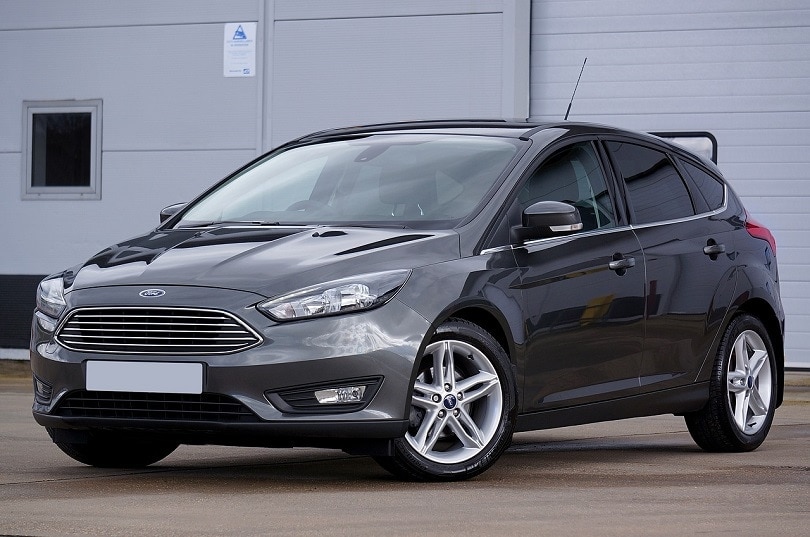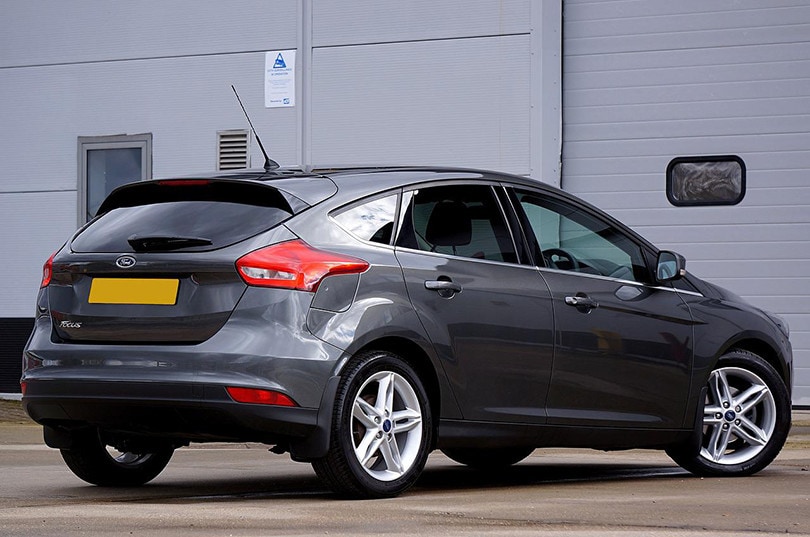Is The Ford Focus Reliable? Pros, Cons & Common Issues
-
Pete Ortiz
- Last updated:

Getting a new vehicle can be exciting, and as there are many available options, choosing the perfect car for you can be tricky. You’ve probably already heard about Ford Focus, as these cars are quite popular. If you’re considering getting one of these vehicles, you need to be well informed about their performance and reliability.
This article will provide you with more info on the Ford Focus models, especially showcasing their reliability to help you determine if it’s the right car for you or not.
Keep reading if you’d like to learn more!
Ford Focus – Pros & Cons
Before we get into the topic and provide further details about Ford Focus and its reliability, check out the pros and cons list to see the good and not-so-good in our Ford Focus model year comparison chart.

| Model year | Pros | Cons | |
| 2000 | ● Sharp handling
|
● Unattractive trim and interior | |
| 2001
2002 |
● Smooth ride
● Sharp steering ● Large interior |
● Unwanted suspension movements
● Not enough grunt |
|
| 2003
2004
2005 |
● Smooth ride
● Roomy interior ● Sharp steering ● Great selection of features and configurations |
● Low reliability
● Uncomfortable seats |
|
| 2006 | ● Simple controls
● Comfortable seats ● Good steering ● Decent ride quality ● Great selection of features and configurations ● Reliable |
● Not the best build quality
● Not enough storage ● No cupholders ● No rear head restraints
|
|
| 2007 | ● Quality ride
● Responsive steering ● Comfortable seats ● Simple controls ● Split-folding rear seats ● Reliable |
● Not enough storage
● No cupholders ● No side curtain airbags ● Sloppy finish |
|
| 2008
2009 |
● Quality ride
● Responsive steering ● Straightforward controls ● Excellent fuel economy ● Affordable |
● No rear headrests | |
| 2010 | ● Good fuel economy
● Unique safety features ● Reliable ● Excellent handling dynamics |
● Engine could use more power
● Uncomfortable back seat ● No telescopic steering wheel |
|
| 2011 | ● High safety scores and reliability rating
● Great standard safety features ● Good mileage |
● Engine could use more power
● Interior needs improvement ● No telescopic steering wheel |
|
| 2012
2013 |
● Excellent handling
● High-quality, attractive interior ● Excellent fuel economy ● Quiet ride |
● Difficult infotainment controls
● Issues with the automatic transmission |
|
| 2014 | ● Stylish cabin
● Sporty trim ● Agile handling ● Comfortable ride |
● Low reliability rating
● Confusing infotainment features |
|
| 2015 | ● Sporty handling
● Excellent interior ● Quiet ride |
● Poor reliability rating
● Limited rear-seat legroom |
|
| 2016 | ● Good handling
● Excellent cabin |
● Low reliability rating
● Not the best transmission ● Underwhelming acceleration |
|
| 2017 | ● Smooth ride
● Agile handling ● Turbocharged engine features |
● Below-average reliability rating
● Inconvenient dual-clutch automatic transmission ● Limited rear-seat legroom
|
|
| 2018 | ● Two turbocharged engines
● Good reliability rating ● Agile handling |
● Cramped seats
● Inconvenient dual-clutch automatic transmission ● Underwhelming acceleration |
|
| 2019 | ● Spacious cabin
● Good engines and excellent handling |
● Not enough storage |
Ford Focus Models To Avoid
We want to mention some Ford Focus models you should try to avoid if possible. Although they are not all that bad, they have issues that lower their reliability rating, which means your safety could be put at risk.

2012 – 2016 Ford Focus
Some of the worst models range from 2012 to 2016, and they had numerous issues that lowered the reliability score of these cars. Most models from this period have transmission issues, and that’s why many of these models were on lists for the worst vehicles in those years. The dual-clutch system was an issue on its own but adding the PowerShift was a bad combination for these cars.
They also have confusing infotainment systems, so the touch screen would draw your attention away from the road, leading to possible issues and accidents.
2017 Ford Focus
Although this is a cute, compact vehicle, it has issues with a faulty canister purge valve which can result in a sudden loss of power. That’s definitely not something you’d like to happen in the middle of the road, which is why we don’t recommend this model.
Common Ford Focus Issues
Although the reputation of the Ford Focus is pretty decent, this model encounters various problems that lower its efficiency and reliability. Below are some of the most common problems users with Ford Focus experience.
Transmission Problems
Many people who drive a Ford Focus had complaints about the transmission issues in this vehicle. These issues are widespread in Ford Focus models from 2011 to 2016. In 2011 Ford Focus added the “PowerShift” automatic transmission to their cars, which caused issues between the dry clutches and dual clutches. Because of this problem, in 2014, the Ford Focus was among the worst vehicles of the year.

Issues With The Engine RPM Fluctuation
Newer Ford Focus models have surpassed the transmission issues, but they have encountered engine issues that also affect the reliability of this vehicle. Once you shift the gear into park mode, the engine’s RPM can rise, regardless of releasing the clutch pedal.
Exhaust and Fuel System Problems
Many users also reported that they experienced exhaust and fuel system problems with the 2012 to 2018 Ford Focus models. In many of them, the exhaust system had a bad purge valve that threatened the vehicle’s fuel tank. Because of that, issues such as power loss, stalling, inability to start the engine, and fuel gauges malfunctioning were widespread.
Engine Stalls
This issue was very common with the 2000 Ford Focus, and the engine would die while operating. Another issue that was typical for this vehicle was the engine blowing, leading to high repair costs.

Steering Issues
Although steering issues weren’t common in all Ford Focus models, they were frequent in the 2012 Ford Focus model. The biggest problem with the steering system was that the system would randomly stop functioning while a person was driving, increasing the risk of possible accidents. Another common concern was the steering system locking itself when a user would turn on the vehicle.
Low-Speed Pre-Ignition
The Ford Focus ST was pretty reliable, and it had turbochargers in the engine that increased the pressure. This type of engine was functional, but it came with a couple of problems, such as low-speed pre-ignition that can damage internal parts of the vehicle.
How Reliable Is The Ford Focus?
The Ford Focus is not the most reliable car out there, but if you keep up the regular maintenance and avoid models with PowerShift transmission, this car might not be a bad option. Try to choose models with higher reliability ratings, such as the 2018, 2011, 2010, 2007, and 2006 models.
Although some models tend to have issues, every model from 2013 to 2018 got a 5-star safety rating from the NHTSA.
Is The Ford Focus The Right Car For Me?
If you’re looking for a compact vehicle that performs decently and has a medium reliability rating, you should check out some of the Ford Focus models. They are affordable, and their maintenance is inexpensive, so you can always keep your car in good shape to prevent possible accidents and injuries.
 Final Thoughts
Final Thoughts
Overall, Ford Focus is not a bad vehicle, but you’ll need to compare all the models to decide which one will suit your needs. Like every other vehicle, the Ford Focus has some good and bad years, so it’s crucial to learn more about them and find a car in your price range that will satisfy your reliability standards.
- “Ford Focus Reliability Rating”
- “Here Are The Ford Focus Years To Avoid”
- “Ford Focus Reliability and Common Problems”
- “Long-Term Reliability: How Ford Completely Lost The Focus”
- “How reliable is a Ford Focus?”
- “How reliable is a Ford Focus?”
- “Ford Focus model comparisons: Comparing the Ford Focus to different trims and other models”
- “What Year Ford Focus is Best?”
Featured Image Credit: AutoPhotography, Pixabay
Contents



